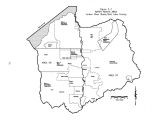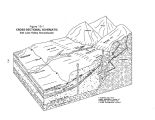| OCR Text |
Show with local interests, the state and other federal agencies. Existing COE projects are the Jordan River and Surplus Canal, completed in 1962, and Little Dell Reservoir, completed in 1993. Projects in progress are the Mill Creek flood diversion to Hillview Detention Basin ( has been reauthorized by Congress and has received initial funding), and the Little Dell Lake Recreation Component ( has been authorized by Congress and has received partial funding) Recently completed Little Dell Reservoir is operated in cooperation with Salt Lake County for flood control and the Metropolitan Water District of Salt Lake for water supply. 16.3.5 Environmental Protection Agency The Environmental Protection Agency ( EPA) has regulatory responsibilities, particularly in water quality. The EPA programs dealing with water resources are the safe drinking water program under the Federal Safe Drinking Water Act ( SDWA) of 1974, as amended in 1996, and water pollution control under the Clean Water Act ( CWA). The SDWA substantially increased the number of regulated drinking water contaminants, added new required treatment methods and made other revisions. The 1996 amendment authorized more than $ 12 billion in federal funds for various drinking water programs and activities nationwide. Several aspects of the Clean Water Act are: National Pollutant Discharge Elimination System ( NPDES) - The NPDES program ( Clean Water Act, Section 402) regulates the discharge of point sources of pollutants to waters of the United States. Construction Grants - This program originally provided grant funds for construction of needed municipal wastewater treatment facilities. It was phased out in 1990 and replaced with a revolving loan fund managed by the state. Water Quality Management Planning and Non- point Source Pollution Control - Section 205 ( j) of the Clean Water Act provides funds to states to carry out water quality management planning. Section 319 of the act authorizes funding for implementation of non- point source pollution control measures under state leadership. 16.3.6 Farm Service Agency Farm Service Agency ( FSA - formerly the Agricultural Stabilization and Conservation Service) administers farm commodity, crop insurance, and conservation programs for farmers and ranchers. As of October 1995, FSA also administers the farm ownership and operating loans formerly provided by the Farmers Home Administration. The FSA's conservation programs include the Agricultural Conservation Program ( ACP), the Emergency Conservation Programs ( ECP), and the Conservation Reserve Program ( CRP). The ACP is a comprehensive program designed to reduce soil erosion, mitigate water pollution, protect and improve the condition of both cropland and pastures, conserve water, preserve and enhance wildlife habitat, and where possible, encourage the conservation of energy. Projects are evaluated at the local level on a case- by- case basis to determine consistency with the overall ACP objectives. The ACP is administered by state and county committees that are made up of local farmers and ranchers. The ECP provides emergency cost- share funding for a number of farm- related disasters that include, but are not limited to excessive wind erosion, floods and extended periods of extreme drought conditions. The CRP was established to encourage farmers through contracts and annual payments to reduce soil erosion. In addition, CRP eligibility has been expanded to promote the preservation and maintenance of wetlands, wildlife habitat and water quality. The USDA- Natural Resources Conservation Service, USDA- Forest Service, and the Utah Division of Forestry, Fire and State Lands provides technical program guidance. The USU- Cooperative Extension Service provides educational support. ( See Tables 8- 2 and 8- 3). 16.3.7 Federal Emergency Management Agency Federal Emergency Management Agency ( FEMA) programs are related to disaster preparedness, assistance and mitigation. They provide technical assistance, loans and grants. Presidential Declared Disaster - Following a presidential declaration of a major disaster, usually in response to a state request, grants are available to the state and local governments for mitigation of disaster- related damage. Assistance Grants - The FEMA can provide grants on a matching basis to help the state develop and improve disaster preparedness plans and develop effective state and local emergency management 16- 3 |

















































































































































































